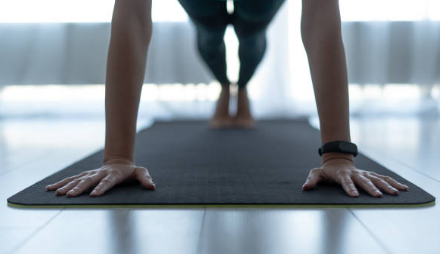Due to complete equipment, excellent facilities, strong sports atmosphere, accompanied by the guidance of professional coaches, gyms have become one of the best options for many people to choose sports venues. However, when you first arrive at the gym, do you think that as long as you follow the trainer’s schedule, you will achieve a certain amount of exercise and get very good fitness results? Or you don’t follow the coach’s guidance at all, but without saying a word, straight up, bench press, barbell, pull all over, think wheezing and sweating is a fitness effect? It is not right to think like this. Fitness is not a project of effort without rules. Fitness without rules will only get half the result with half the effort, waste the physical energy, but also not the fitness effect, and even damage. Why is that?
Just like we all have to get up, wash our face, brush our teeth, eat breakfast and other activities before going to work, in order to go to work with full spirit, the order of fitness action is actually one of the key factors that determine the effect of fitness. Under normal circumstances, warm up is the preparation activity, is the first process of fitness activities to be carried out, this is also known to be an important part of the general preparatory activities and special preparatory activities. General preparatory activities require everyone to use aerobic equipment for 5-10 minutes of warm up exercise, which can significantly improve everyone’s heart rate and muscle temperature, so that all parts of the body and organs begin to adapt to the upcoming high-intensity exercise.
At the end of the systemic warm-up, we also need to carry out the corresponding part of the joint targeted warm-up. For example, if you want to exercise today is the upper limb, then you should warm up the shoulder joint after the end of the whole body, so as to avoid the risk of shoulder joint injury in the next high intensity exercise. Compared with the whole body warm-up, a targeted joint warm-up is an important step that we tend to overlook in fitness activities. Therefore, after listening to this lesson, I hope the listeners can add a targeted warm-up to their fitness schedule to avoid the appearance of sports injury.
After the warm-up session, some listeners may be wondering: What training should I do next? Don’t worry, I have a fitness order formula can tell you, easy to remember. The first is “strength first, then aerobic”. After the warm-up, we should first carry out strength training. This is because the risk of strength training is higher than aerobic exercise, and the energy consumption is high. Only a certain number of target groups can achieve the exercise effect, so we should carry out it first at the end of the warm-up and when we are full of energy. In addition, from the perspective of energy consumption, at the beginning of exercise, the human body will first choose to consume the glycogen stored in the body, and the main energy consumption of strength exercise is also glycogen, so it is perfect for strength training at this time. At the same time, after the end of strength training aerobic exercise, can achieve the purpose of aerobic exercise to consume fat faster, greatly improve the efficiency of fat reduction. What if some of you have a workout that only involves strength training or only involves cardio training on your workout day?
Which brings us to the second formula — “first big, then small.” That is, when you build muscles, you build your big muscles first and then your small muscles. The training of large muscle groups can increase the secretion of testosterone in blood and contribute to muscle hypertrophy. If you train the small muscles first, the fatigue of the small muscles will spread to the big muscles, making the big muscles unable to achieve the training effect.
At this point, listeners may not be able to bring their own fitness sequence and movement, but it’s okay, let me give you an example. In the body’s constitution, upper body strength belongs to the large muscle group, while hand strength, which controls grip strength, belongs to the small muscle group. In fitness training, it is common to work on upper body strength first, and then contact the grip strength of the hands. Choosing to practice small muscle groups first will quickly produce fatigue, but also accelerate the speed of fatigue of large muscle groups, resulting in upper body strength can not achieve the training effect. Therefore, if everyone’s current fitness activities, there has been the condition of practicing small muscle groups first, and then practicing large muscle groups, it must be adjusted in time, otherwise there will be less effort and less effort.
Do we need to come to the gym every day to build muscle? Of course not. As we have said in the last two classes, any exercise has a role to play. It is important to define our training schedule according to the purpose of fitness. For example, when doing resistance training, most male bodybuilders aim to build muscle and get in shape, so once every two days is enough. Work 2-3 sets of 8-12 reps of the same muscle at a time, with 2-3 minutes of rest between sets.
But if you are a female or elderly fitness enthusiast, because the purpose of their fitness is not to increase muscle, but to improve the endurance strength of the muscle, they can train every day, each time 2-3 sets of 15-20 times, with 2-3 minutes of rest between the groups. This is the time to pay attention! The weight of the barbell or dumbbell should be much lower than that of the gain group.
In addition, there are some young people who want to increase their maximum muscle strength and explosive power when performing anti-group strength sports, so their training intensity needs to be increased, and the weight of barbells or dumbbells is heavier. Each workout consists of 2-3 sets of 3-5 reps, 2-3 minutes of rest between sets, plus some speed training, and you can only train twice a week, that is, after training once, you must rest for 3-4 days before training again.
For those of you who are listening to these plans, they may feel very complicated, so let me give you a brief summary. If you are trying to build muscle, then it is recommended that the resistance load is moderate, with only 8-12 reps per set and one workout every other day. If you want to increase muscle endurance strength, then it is recommended that the load is light, each set can achieve 15-20 reps of weight, can train daily; If it is to increase the maximum muscle strength or explosive power, then it is recommended to load the heaviest weight, each group can only complete 3 to 5 times of weight, 3 to 4 days interval before the second training. These intervals are mainly for the muscle to have enough time to recover. If the fatigue does not recover and the next training, not only can not achieve the training effect, but also may cause muscle injury.
In the clear order and time interval of each fitness action, we also want to add “stretch” in their fitness content. Stretching can help you relax your muscles, relieve soreness, increase flexibility and muscle extensibility, and promote your next workout. Stretching is an important fitness step that corresponds to warming up.
At this point, I think you can see why the same exercise, in a different order, is less effective. And fitness must pay attention to science, it is possible to three days of fishing two days of net training effect is better than the effect of training every day.








Recent Comments